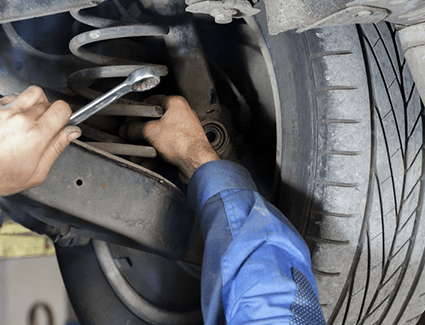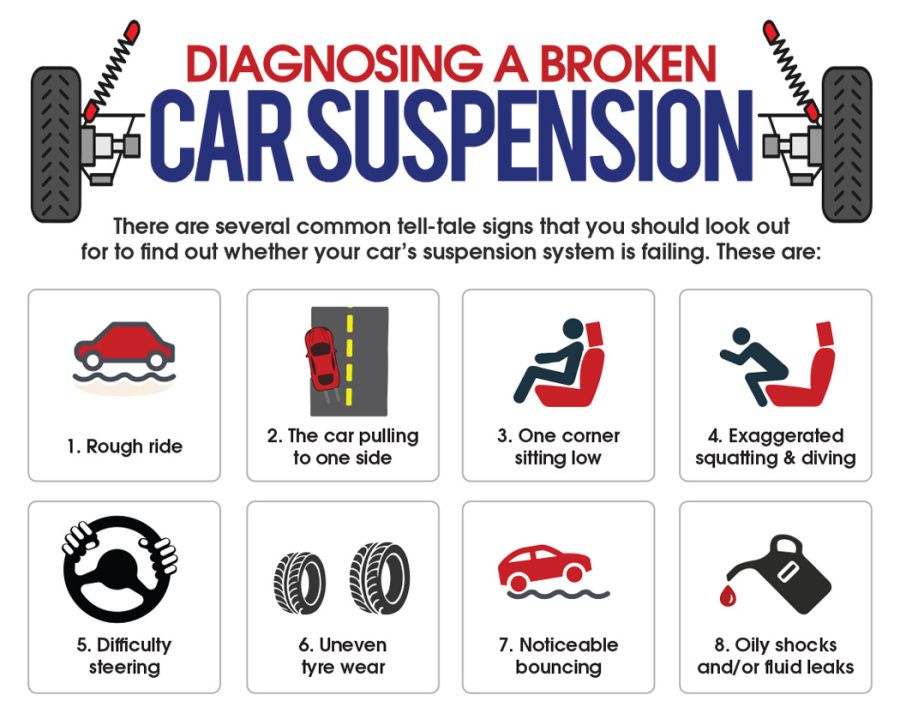How to Diagnose Car Suspension Problems: Expert Tips & Tricks
Car suspension is crucial for a smooth ride. It keeps your car stable and comfortable. But what happens when it fails? Let’s learn how to diagnose car suspension problems.
Signs of Suspension Problems
First, you need to know the signs. Here are some common signs of suspension problems:
- Bumpy ride: If your car feels too bumpy, it could be a suspension issue.
- Uneven tire wear: Check your tires. If they wear out unevenly, your suspension might be faulty.
- Drifting or pulling: Your car might drift or pull to one side while driving.
- Noise: Listen for unusual noises like squeaking or clunking.
- Leaning: Your car might lean to one side when parked.

Credit: www.shinglespringssubaru.com
Steps to Diagnose Suspension Problems
Now, let’s go through the steps to diagnose suspension problems.
1. Visual Inspection
Start with a visual check. Look for these signs:
- Check for leaking fluid around the shocks or struts.
- Look at the tires. Uneven wear can signal suspension issues.
- Inspect the springs. They should be intact, not broken or sagging.
- Check for any loose or broken parts.
2. Bounce Test
The bounce test is simple. Follow these steps:
- Press down on the front of the car.
- Release it quickly.
- Observe how the car reacts.
- Repeat for the rear of the car.
If the car bounces more than 2-3 times, you have a suspension issue.
3. Listen For Noises
Drive your car on different roads. Listen for unusual sounds:
- Squeaking: This could mean worn-out bushings.
- Clunking: This might indicate loose or broken parts.
- Rattling: This could be a sign of a damaged shock absorber.
4. Check The Alignment
Proper alignment is crucial. Here’s how to check:
- Drive your car on a straight road.
- Observe if the car pulls to one side.
- Check the steering wheel. It should be centered.
If the car pulls or the steering wheel is off-center, you need an alignment check.
5. Inspect The Bushings
Suspension bushings wear out over time. Here’s how to inspect them:
- Locate the bushings. They are usually rubber or polyurethane.
- Check for cracks or wear.
- Replace any damaged bushings.
6. Examine The Ball Joints
Ball joints are vital for steering and suspension. Follow these steps:
- Lift the car using a jack.
- Wiggle the wheel. There should be no play.
- Check for any noise or looseness.
- Replace faulty ball joints immediately.
7. Test The Shocks And Struts
Shocks and struts absorb bumps. Here’s how to test them:
- Push down on each corner of the car.
- Observe the rebound. It should bounce back smoothly.
- Check for oil leaks around the shocks or struts.
If the car bounces excessively or you see leaks, replace the shocks or struts.
When to Seek Professional Help
Sometimes, DIY checks are not enough. Seek professional help if:
- You are unsure about the problem.
- The issue persists after your checks.
- You hear loud noises or feel severe instability.

Credit: www.yourmechanic.com
Frequently Asked Questions
How Can I Tell If My Suspension Is Bad?
Unusual noises, uneven tire wear, or a bumpy ride indicate suspension issues.
What Are Common Signs Of Suspension Problems?
Common signs include clunking sounds, drifting, and poor handling.
Why Is My Car Bouncing Excessively?
Excessive bouncing is usually caused by worn-out shocks or struts.
How Does A Bad Suspension Affect Driving?
A bad suspension reduces vehicle control and can lead to accidents.
Can I Drive With A Bad Suspension?
Driving with a bad suspension is unsafe and can damage other car parts.
How Often Should I Check My Car Suspension?
Check your suspension every 12,000 miles or annually, whichever comes first.
What Causes Suspension Problems?
Suspension problems can be caused by worn parts, rough roads, or improper maintenance.
Conclusion
Diagnosing car suspension problems is essential for safety. Follow these simple steps to identify issues:
- Perform a visual inspection.
- Conduct the bounce test.
- Listen for unusual noises.
- Check the alignment.
- Inspect the bushings and ball joints.
- Test the shocks and struts.
Remember, if in doubt, seek professional help. Your car’s suspension is key to a safe and comfortable ride.


